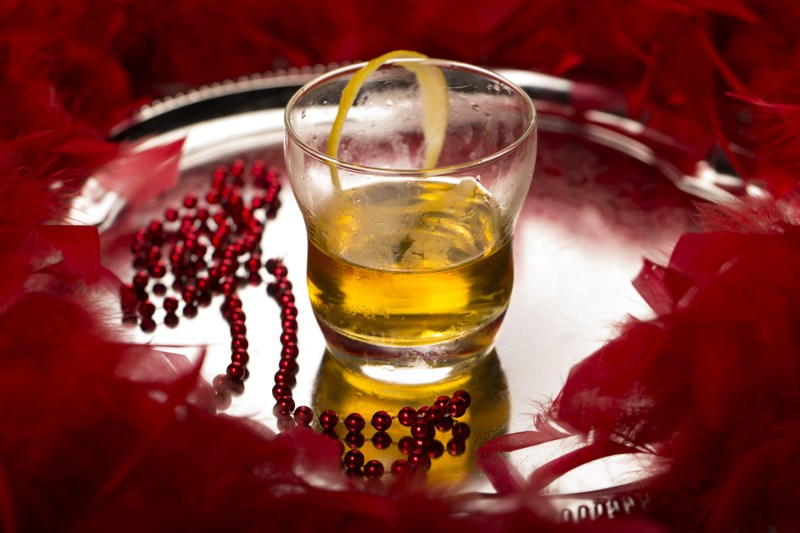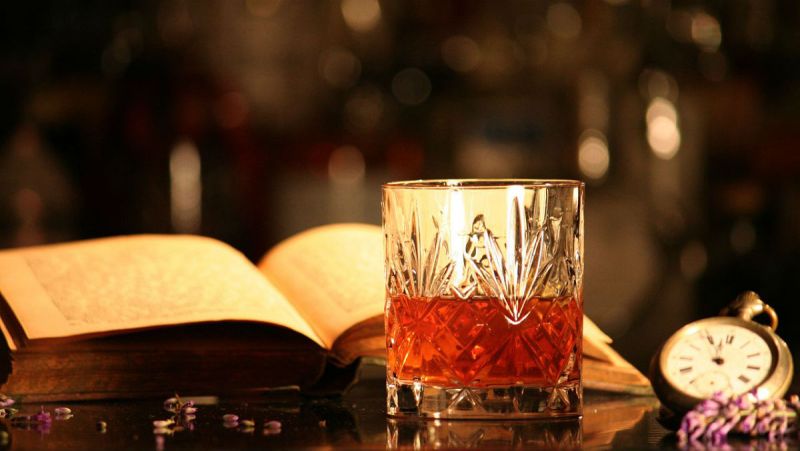
One of America’s oldest known cocktails, the Sazerac cocktail is a New Orleans classic. One sip and you’ll quickly realize why this reddish-orange elixir has been going strong in the Big Easy and beyond since the 1800s. The Sazerac has a big, bold flavor that’s remarkably balanced, with a blend of sweetness, spice, and herbal notes, all wrapped up in one potent, whiskey-loving libation. Though difficult to master, it’s a fairly easy drink to make. It’s also a great cocktail to showcase your mixology skills, particularly while playing some fiery jazz in the background (you can’t go wrong with Rebirth Brass Band.)
The classic Sazerac recipe

The Sazerac drink recipe is a fairly straightforward one, but if you want to have the authentic taste, make sure you are using the right bitters,
Ingredients:
- 4 dashes of Peychaud’s bitters
- 2 ounces rye whiskey
- 1 tablespoon of absinthe
- 1 sugar cube
- Several drops of water
- Lemon peel, for garnish
Method:
- In a mixing glass, muddle the sugar with the water.
- Add ice cubes, rye, and Peychaud’s bitters. Stir well.
- Rinse a chilled old-fashioned glass with absinthe, thoroughly coating the sides; then pour off the excess.
- Strain the contents of the mixing glass into the old-fashioned glass.
- Express the lemon peel over the drink then garnish on the glass.
The bitter truth

The most important element is Peychaud’s Bitters — without it, you’re not really drinking a Sazerac. This flavor-packed ingredient was developed by a Creole apothecary named Antoine Amédée Peychaud, whose family fled the revolution in Saint-Domingue (present-day Haiti), and settled in New Orleans in the early 19th century. Peychaud began hawking his bitters, based on an old family recipe, in the 1830s and proudly touted their medicinal quality — in those days
Some New Orleans guides even claim that Peychaud essentially invented the cocktail. According to legend, Peychaud served his customers his curatives in an upturned egg cup, known in French as a coquetier. Over time, the word was anglicized to the easier-to-pronounce “cocktail.” It’s a fine story — one that’s repeated endlessly around town — though not quite grounded in reality since the first appearance of the word “cocktail” was spotted in 1806 when Peychaud was just three years old.
Evolution of a cocktail

Given the long-running French connection in New Orleans, it’s not surprising that cognac was the original main ingredient for the Sazerac. Indeed, the whole drink is named after the cognac that Peychaud used — the Sazerac de Forge & Fils (a label brought back to life in 2019).
In the 1870s, however, the phylloxera epidemic devastated the grape industry in France, making it impossible to find cognac (produced from the Ugni blanc grape grown in the
Absinthe was another variable component of the drink. When the high-proof alcohol was banned in 1912, drink makers swapped in a legal wormwood-free substitute with the same anise-flavored profile. Herbsaint, which was created in New Orleans, indeed shares many similarities with absinthe, from its greenish-gold hue to its very name (the French in Louisiana called wormwood “herbe sainte;” today its modern label contains images of the wormwood plant, despite the absence of the ingredient within). Now that
Try the original recipe

Once you’ve mastered the classic Sazerac recipe, which was named the official cocktail of New Orleans in 2008, perhaps you’d like to branch out and go further back in time to taste the Sazerac cocktail as it was originally made, with cognac instead of rye whiskey. You can even have a taste-testing at a Mardi Gras-themed party and see which one your group likes better.
(Recipe from Liquor.com)
Ingredients:
- Absinthe (to rinse the glass)
- 2 ounces cognac
- 1/2 ounce simple syrup
- 3 dashes Peychaud’s bitters
- Lemon peel for garnish
Method:
- Rinse the inside of an Old Fashioned glass with the absinthe and then fill the glass with crushed ice.
- Add the cognac, simple syrup, and bitters to a mixing glass filled with ice and stir until it’s well chilled.
- Discard the ice and excess absinthe from the Old Fashioned glass and strain the drink into the glass.
- Express the oil from the lemon peel into the drink, garnish, and serve.



